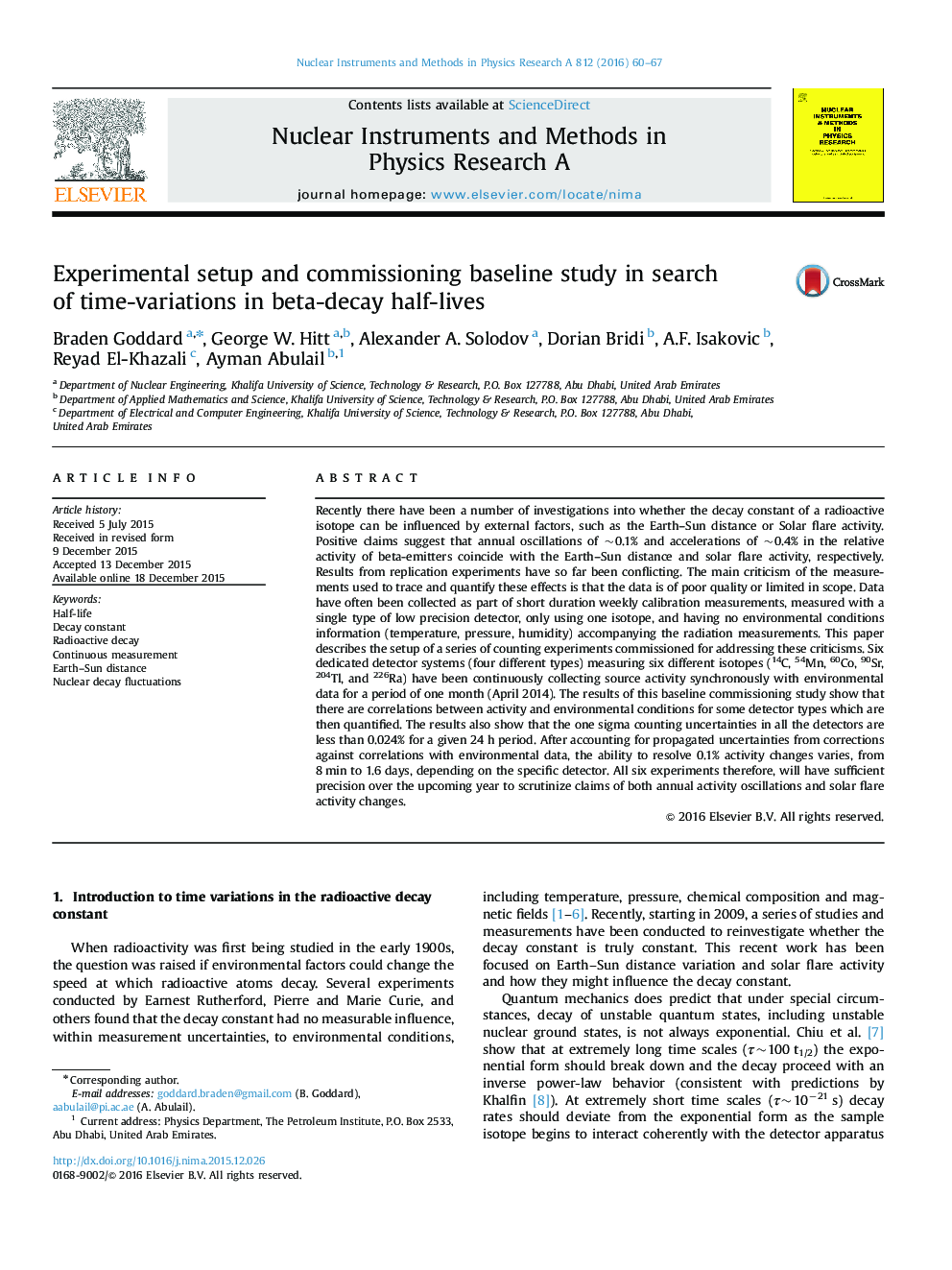| کد مقاله | کد نشریه | سال انتشار | مقاله انگلیسی | نسخه تمام متن |
|---|---|---|---|---|
| 1822119 | 1526314 | 2016 | 8 صفحه PDF | دانلود رایگان |
Recently there have been a number of investigations into whether the decay constant of a radioactive isotope can be influenced by external factors, such as the Earth–Sun distance or Solar flare activity. Positive claims suggest that annual oscillations of ~0.1% and accelerations of ~0.4% in the relative activity of beta-emitters coincide with the Earth–Sun distance and solar flare activity, respectively. Results from replication experiments have so far been conflicting. The main criticism of the measurements used to trace and quantify these effects is that the data is of poor quality or limited in scope. Data have often been collected as part of short duration weekly calibration measurements, measured with a single type of low precision detector, only using one isotope, and having no environmental conditions information (temperature, pressure, humidity) accompanying the radiation measurements. This paper describes the setup of a series of counting experiments commissioned for addressing these criticisms. Six dedicated detector systems (four different types) measuring six different isotopes (14C, 54Mn, 60Co, 90Sr, 204Tl, and 226Ra) have been continuously collecting source activity synchronously with environmental data for a period of one month (April 2014). The results of this baseline commissioning study show that there are correlations between activity and environmental conditions for some detector types which are then quantified. The results also show that the one sigma counting uncertainties in all the detectors are less than 0.024% for a given 24 h period. After accounting for propagated uncertainties from corrections against correlations with environmental data, the ability to resolve 0.1% activity changes varies, from 8 min to 1.6 days, depending on the specific detector. All six experiments therefore, will have sufficient precision over the upcoming year to scrutinize claims of both annual activity oscillations and solar flare activity changes.
Journal: Nuclear Instruments and Methods in Physics Research Section A: Accelerators, Spectrometers, Detectors and Associated Equipment - Volume 812, 11 March 2016, Pages 60–67
